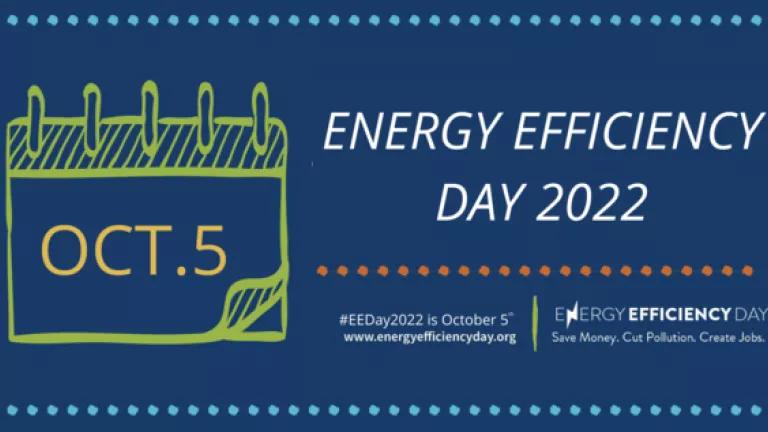Protecting Your Wallet Against Spiking Fossil Fuel Prices
How can families stay comfortable in their homes, while also keeping their energy bills low and reducing carbon emissions?

It’s no secret that energy costs have gone up this winter, and many Americans are feeling the pinch in their wallets as they turn up the heat to keep warm. Why are prices so high right now? It boils down to the uncertainty of supply and demand in the fossil fuel industry. Few commodities are as susceptible to price fluctuations as oil and gas—for example, the unit price of “natural” (fossil) gas has risen more than 500 percent over the past 18 months. Given that more than 60 percent of homes in the U.S. are heated with “natural” gas or other fossil fuels, consumers are extremely vulnerable to higher heating bills as prices fluctuate. Low-income residents and communities of color, who already face the highest energy burdens, are most vulnerable to price spikes. So, how can families stay comfortable in their homes today, while also keeping their energy bills low over the long term and reducing carbon emissions? The answer is two-fold: energy efficiency and super-efficient electric heat pumps for heating and hot water.
Start with efficiency
Improving the energy efficiency of your home will go a long way toward preventing heat from being wasted, while improving comfort and reducing energy costs. Lower energy use also helps curb the climate-warming emissions generated when fossil fuels are used for heating or generating electricity, which in turn reduces your home’s carbon footprint. Buildings offer an enormous opportunity for reducing greenhouse gas emissions: switching to efficient electric heating systems and appliances powered by pollution-free electricity could cut the nation’s carbon emissions by 1 billion tons annually.
Efficiency improvements can be straightforward and cost-effective, ranging from weatherizing by sealing problem areas around windows and doors to reduce drafts, to adding insulation in walls and attics, to investing in higher-efficiency appliances and equipment. Nearly 80 percent of the housing units in the U.S. were built in 1999 or earlier, before the advent of modern building energy codes designed to cut energy waste—meaning that the bulk of homes in the country have little insulation. Furthermore, the efficiency of home appliances and equipment has increased substantially over the past few decades, thanks to improved federal energy efficiency standards. That means that if you’re still heating your home using that furnace or heat pump from the 1970s or 80s, it will cost significantly more to operate than a modern model.

An energy efficient window being installed in a New York City apartment
A great starting point is to have a home energy assessment, where a professional will take a comprehensive look at your home to provide customized recommendations on how to save energy and money. Many utility companies and states offer programs to offset the cost of this service—and the energy efficiency upgrades often pay for themselves in energy bill savings.
Breaking free from fossil fuels with efficient electrification
Energy efficiency is an enormously important tool homeowners can use today in order to lower energy bills and reduce greenhouse gas emissions. However, as long as we as a nation are reliant on fossil fuels, we are being held hostage to these ongoing dramatic price surges. The longer-term solution? Switch to highly-efficient, electric space and water heating powered by a pollution-free, reliable electricity grid. Let’s break that down a bit further.
First, homes must be weatherized to reduce overall energy demand, which homeowners can do today. Insulation and air sealing acts like a blanket for your home, keeping you warm and snug while keeping heated (or cooled!) air from leaking out cracks and gaps. Then, the major energy-using systems in the home—space heating, cooling, and water heating—should be powered by efficient electric equipment. High-efficiency heat pumps are three to five times more efficient than typical gas equipment for heating water and indoor spaces, and the equipment is readily available in the market. Efficient heat pumps save money as compared to gas appliances in most circumstances today and will save increasingly more as gas prices continue to rise faster than electric prices. This combination of efficiency and electrification will lower bills and lower emissions.

A heat pump installed as part of a mini-split heating and cooling system
Next, the electric grid. Homes heated with electricity today are largely immune from price volatility because electric utilities have diversified and hedged portfolios of energy resources, and renewable energy, which costs virtually nothing to operate, makes up an increasingly significant share of total supply. Last fall, the U.S. Energy Information Administration projected that retail heating fuel prices would increase 30 to 54 percent relative to the previous winter. In contrast, retail electricity bills were projected to increase only about 6 percent.
America’s electricity supply is cleaner than ever, with renewable energy making up about 20 percent of the energy used to generate electricity and growing rapidly. Renewable energy will continue to make up a larger and larger share of the grid mix over time, making electricity prices less susceptible to the price increases of the volatile fossil fuel industry—and unlike fossil fuels, renewable energy won’t ever run out. As the grid becomes cleaner, each building connected to that cleaner grid will therefore emit fewer pollutants. Likewise, buildings that are well-insulated and use efficient equipment put less pressure on the grid, avoiding spikes in demand and keeping costs more stable for everyone.
Utility bills can be reduced further if customers have access to electricity rates that reflect the varying cost of supplying energy at different times each day. These time-of-use rates allow homeowners to save money by setting their largest appliances, such as car charger, heat pump water heater, washer or dryer, etc. to operate at the time when electricity is cheapest, most plentiful, and likely to be generated from the cleanest sources.

Rooftop solar in a Colorado neighborhood
With an electricity grid that is rapidly getting cleaner, investing in energy efficiency and electrification will result in homes that are more comfortable, use less energy, have lower energy bills—and are healthier to live in. The burning of fossil fuels inside homes releases air pollutants that can exacerbate existing respiratory and health conditions. In areas with heavy pollution burdens, particularly in low-income communities that disproportionately experience poor air quality, such improvements are sorely needed.
Turning vision to reality
To make this vision a reality, we need supportive policies at all levels of government, particularly to ensure that renters and lower-income homeowners have access to home energy improvements. This includes appliance efficiency standards that promote low-carbon, electric equipment, direct incentives for increasing a home’s energy efficiency, rebates and tax credits for investing in highly-efficient electric appliances and equipment, and policies that accelerate the transition to a clean electricity grid. In particular, strong appliance and efficiency standards have the potential to cost-effectively transform the market for heat pump technology, making this transformative equipment available and affordable for all. Policies that reduce our reliance on fossil fuels will help stabilize energy prices for consumers while reducing the risks of climate change—now that’s what we call a win.



